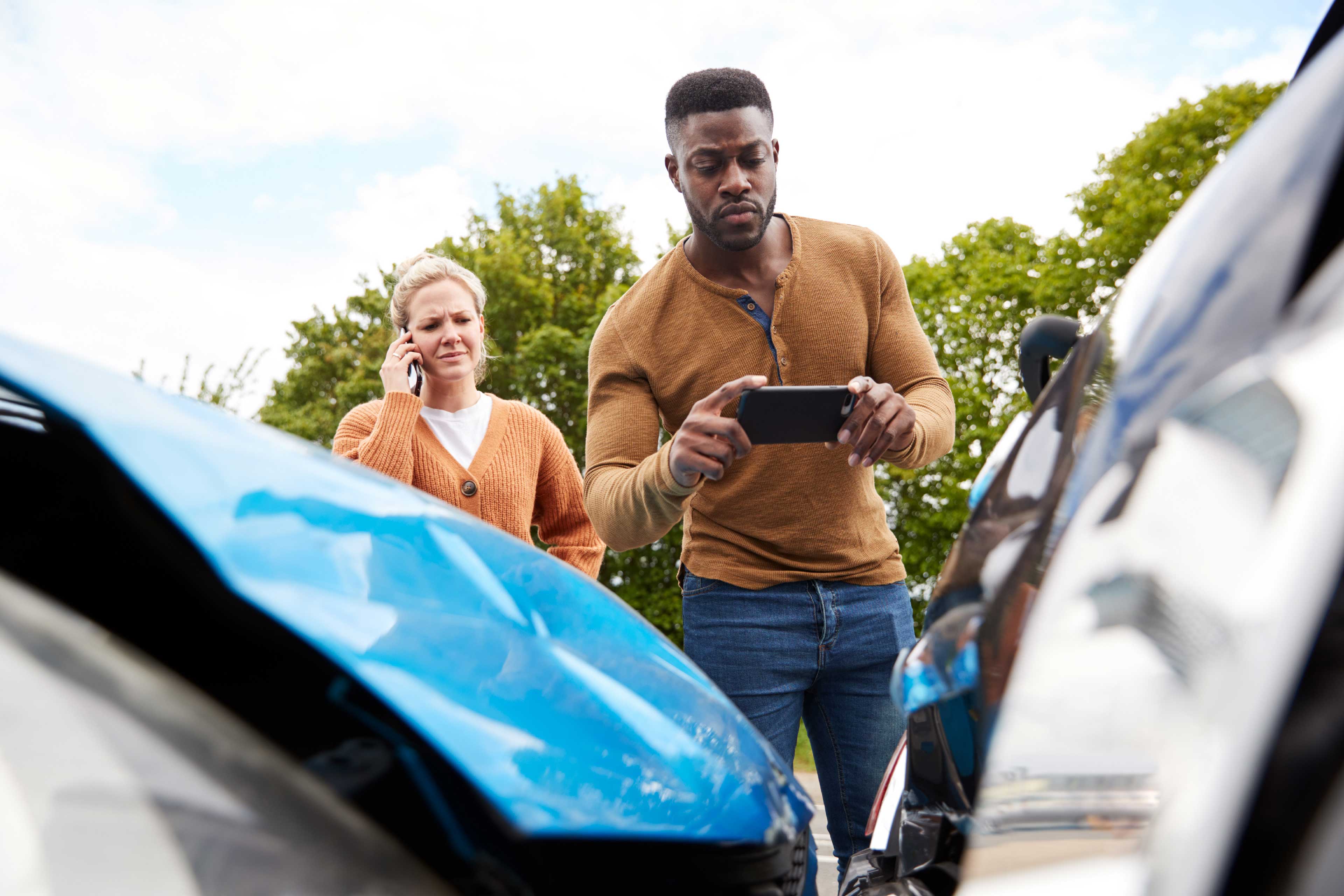Vehicle accidents of any kind often means a lot of time is spent on the phone with two or more insurance companies, recounting the same story and information over and over.
With the high prevalence of smartphones and their camera features, those drivers and even passengers involved can now provide far more substantive information to their insurance companies, law enforcement personnel, or legal representatives.
After an accident, the single most important issue is everyone's safety, including doing everything you can to assist with injured persons as well as getting everyone away from further harm. Remember, people first, such-as rendering aid or making sure all non-injured parties are clear of other traffic, and then worry about getting accident information.
While pictures are better than verbal and written accident descriptions, it is best to have a photographic strategy in order to gather visual accident information to protect against any possible liability resulting from the accident.
If you can keep a cool head and a steady hand, consider doing the following:
- Use photos to document injuries but, again, NOT when doing so affects arranging for proper treatment of those that are injured
- Get one or more photos of all the vehicles involved in the accident from several vantage points
- Take several close-up photos of any damaged areas, both interior and exterior views
- Be certain to get shots of other important elements such as, vehicle debris, road surfaces (especially if they contain elements that may have contributed to the accident such as ice, ruts, potholes), tire marks (or lack of) and damaged curbs, light poles, guard rails, lawns, shrubs, trees, etc.
- Take shots from a wider view that includes any street landmarks or features that show the position of all vehicles
- Photos should include both single-side and two-side vehicle views
- Make sure that some photos include a clear shot of the vehicles' license plates and any other distinguished features, particularly when a vehicle has prior damage
- It is also helpful to take photos that illustrate other conditions such as weather, lighting, traffic signals, etc.
A good strategy should also include respecting the privacy rights of others at the accident scene, as well as protecting your own. Do not photograph or allow to be photographed any of the following:
- Your driver's license or identity card
- Auto insurance card
- Auto registration
- Other legal identifying documents
These items are for your personal and private use only, or to be shown to licensed authorities, such as a police officer. California's law does not require any private documents to be photographed. All information should be written down between all parties involved in any vehicle related accident.
While no one wants to be involved in an accident, if you are, have a plan ready and use your smartphone to help in dealing with documenting the scene and help limit some of the long-term financial consequences during the insurance review process.
Request a Free Quote Today!
Our team is ready to help you.
Resources
We can help with any of your insurance needs, providing personal, commercial, life, and health insurance policies and advice.
Get a QuoteGet in Touch
Contact Us
Phone: (714) 526-5588
Fax: (714) 526-4487
Email: info@williamsinsurance.com
Our Location
609 N. Harbor Blvd.
Fullerton, CA 92832
